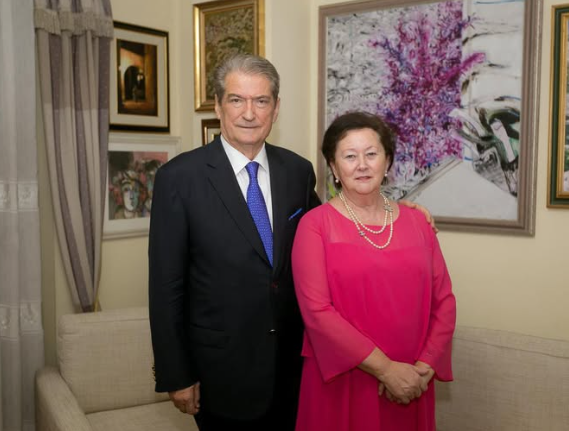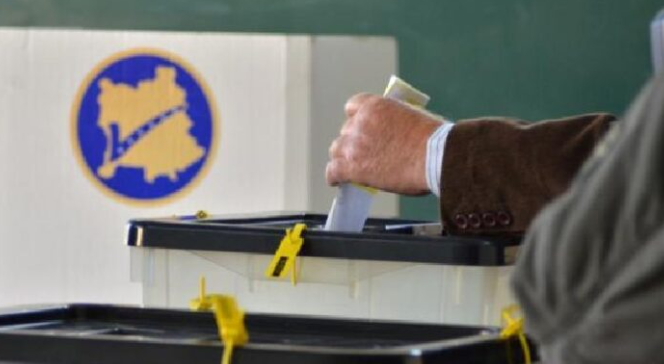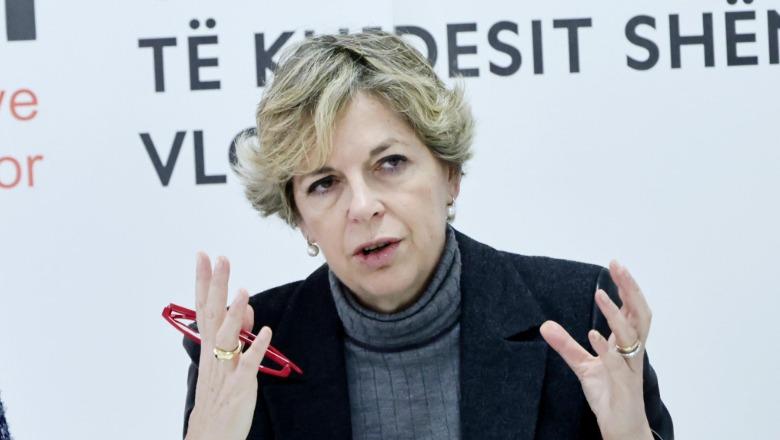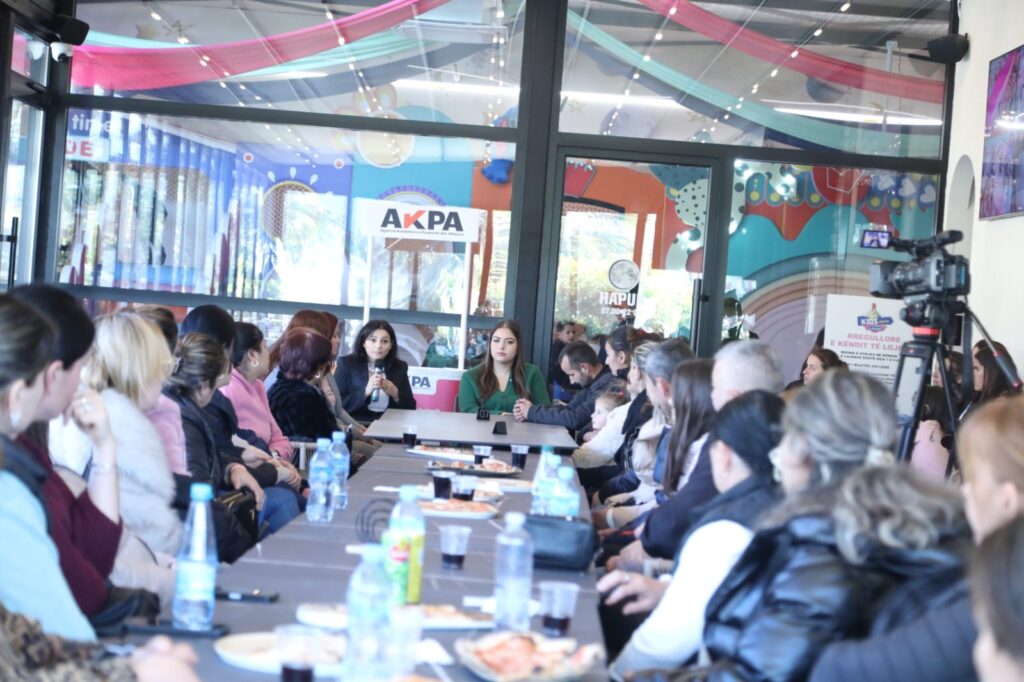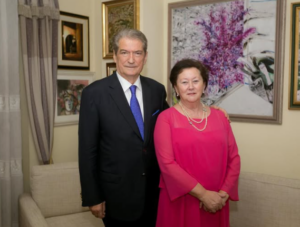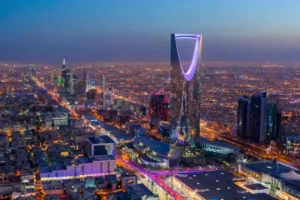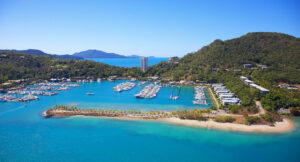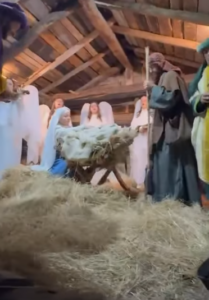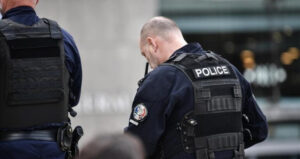The art of nation-building in Albania
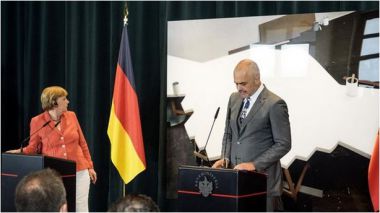
FINANCIAL TIME
Earlier this month, the German chancellor Angela Merkel took a short break from the tortuous eurozone negotiations over the resolution of Greece’s financial woes to travel to the Balkans in a mission to strengthen ties between Germany and the region. Her first stop was Albania, where the country’s prime minister, Edi Rama, welcomed her with all the usual diplomatic fanfares (it was Merkel’s first visit) — and an extra surprise.
While on her way to a press conference in the entrance hall of the prime minister’s office, an imposing communist-era building in central Tirana, Rama took Merkel inside a small room, where she was introduced to some of the most eminent European contemporary artists of our time.
There was France’s Philippe Parreno, best known for his film, made with Douglas Gordon, on the French footballer Zinedine Zidane; the Stockholm-based artist Carsten Höller, currently the subject of a solo show at London’s Hayward Gallery; the Albanian-born Anri Sala; the British conceptualist Liam Gillick; and Merkel’s compatriot Thomas Demand. The meeting, the artists said later, was awkward, and a little “surreal”, according to one of them.
Inside the press conference, the two leaders gave their addresses in front of a giant photograph by Demand, called Sign, showing a model of a handshake, based on an actual sign used in the New York World’s Fair of 1939. That was an event that symbolised the optimism of a world that trusted in the future. But the sign, in the photograph, is unfinished, a couple of buckets of paint resting on either side of it. The handshake is a work in progress. Building a better world for tomorrow, Demand’s picture suggests, is not a straightforward business.
Outside the building, there were a couple of more nuanced messages for Rama’s distinguished guest. One of Höller’s famous mushroom sculptures, “Giant Triple Mushroom”, is a 3D collage of three different fungi: one edible, one poisonous and one hallucinogenic. The sculpture, said an official handout, “can be perceived as a comment on Albanian politics”.
At the entrance, a bright white marquee with flashing lights, designed by Parreno, welcomed visitors with an unmistakable touch of glamour. It signalled a new life for the building that was for so many years the muffled, sinister headquarters of the country’s hardline communist rulers. Today, it was being inaugurated as Tirana’s new Centre for Openness and Dialogue. And Rama, artist-turned-politician, was showing one of the planet’s most powerful leaders that nothing, in his view, can change the world quite like art.
. . .
The following day, I am ushered into Rama’s private office. The wallpaper consists of a series of colourful, abstract splurges against a white background. “They are my doodles,” he explains. Before he turned to politics, the 51-year-old prime minister was a practising artist, having studied at Tirana’s Academy of Arts, and he lived and worked in Paris for several years.
Fittingly, this is like no other politician’s office I have ever visited. There are boxes of crayons on just about every available surface in the room, and light orchestral music plays in the background throughout the course of our interview. In one corner, there is a basketball on a hat-stand — Rama, who is 6ft 6in tall, also used to play for the Albanian basketball team. He is dressed today in an elegant suit and sports a fashionably close-cropped haircut, which is roughly the same length as his salt-and-pepper stubble.
He is palpably proud of his new centre: he says it will attract people who may want to attend workshops on subjects such as, say, leadership. “But the art will be there. And I am sure that, next time, some of those people will come to see the art: ‘OK, I am going to see what is happening there.’ It is an interaction, which will make the space much more lively, more human.”
The art comes first, he says. “In my opinion, art first happens, and then all the talk about it happens. It is not that Carsten Höller needed Albanian politics to help him make the mushroom; he invented the mushroom, and then [it was applied] to Albanian politics.” The centre, he specifies, “is not a cultural centre. It is a public space where culture, politics and art can happen, all together.”
Inside the new venue, which is free to the public, there are further surprises. A small room houses seemingly random collections of artefacts from Albania’s communist years. They come from warehouses full of unused stock, from small household items to agricultural tools. A disorganised pile of sickles lies on a shelf. “As soon as I saw them, it made me think of the old flag,” says the display’s curator Edit Pula, another artist. She wants the room to create a “dialogue” between Albania’s past and future.
 KOHA JONË SONDAZH
KOHA JONË SONDAZH










